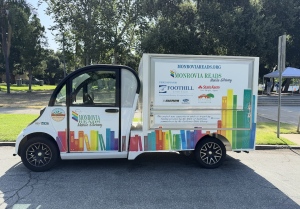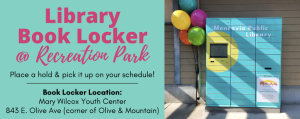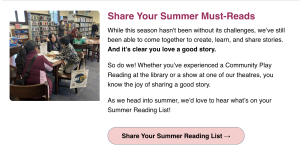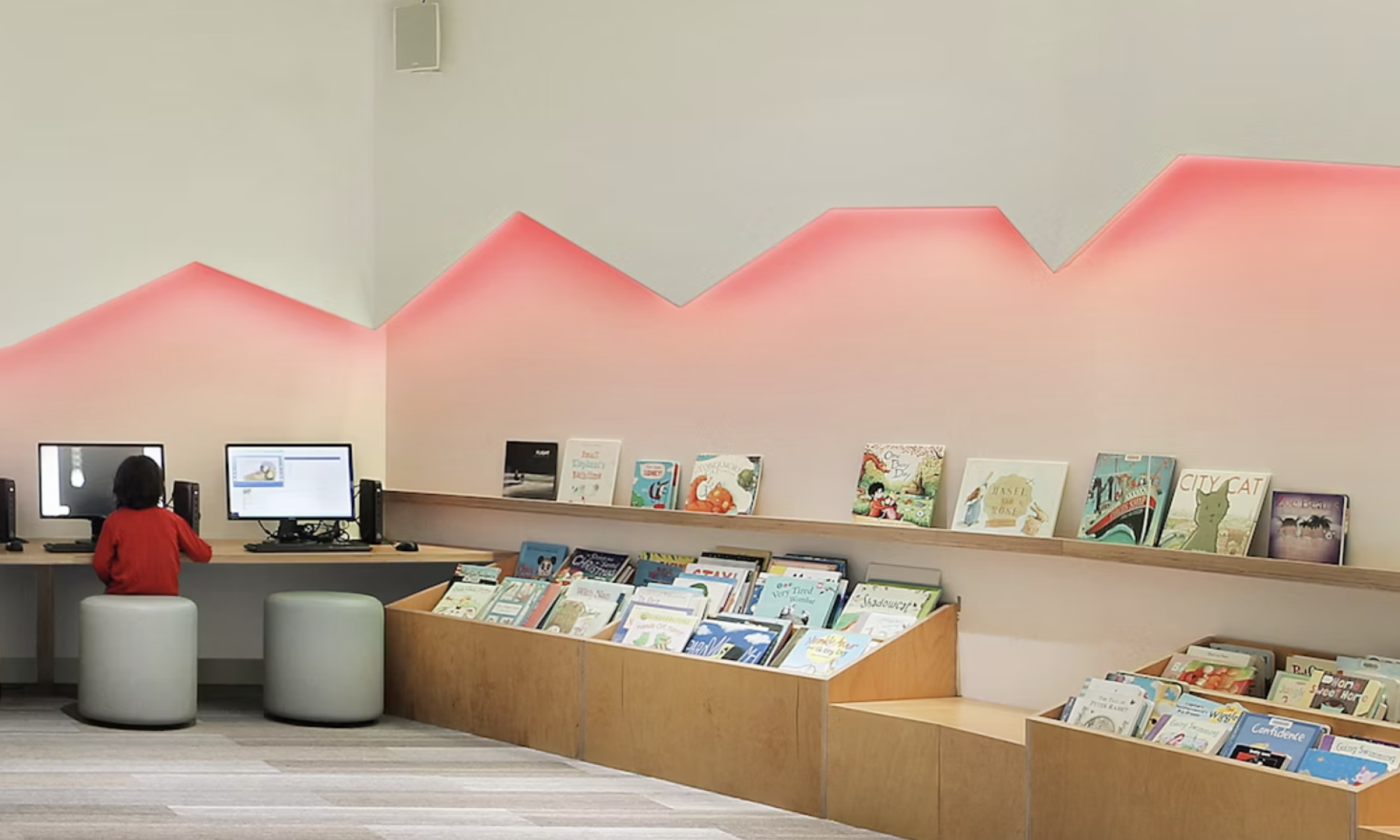I start with a couple of questions introduced to us by Buckland in his manifesto way back in 1992. He wrote that the initial question to redesigning library services is how to do the same library services better, for example, a more efficient self-checkout process. However, a longer term question to consider is how to do better, different things.
Buckland (1992) wrote this more than 30 years ago and there is evidence all over the world of how libraries and librarians are responding to both questions. One of my personal observations is seeing the bookmobile at the Boys and Girls Club (BGC) where my kids attend. While the idea of a bookmobile is hardly new, it made my heart happy to see this vehicle parked at the BGC. It is a symbol of community outreach, and on top of that, the library is developing a foundational relationship with school-age children who hopefully will grow up with a positive impression of the library. Another type of community outreach was established through sponsorship from various local businesses. A credit union, insurance agency, and car dealership sponsored this cute little bookmobile (OMG-I might end up becoming a children’s librarian just so I can drive this thing!).

Also at the BGC is a Library Book Locker! People can reserve a book and pick it up at the book locker. This is most convenient for busy parents (like me) who can pick up a book at the same place they pick up their kids after work or at any time! There is no need to wait for the library to open or rush there before it closes.

Another instance of doing something that is different and better is Center Theatre Group’s (CTG) partnership with the Los Angeles Public Library (LAPL). CTG started the Community Play Readings initiative more than a decade ago in 2013, bringing theater to LAPL branch libraries in underserved LA neighborhoods such as Boyle Heights. The play-reading program has persisted and grown and they have even offered mask-making and costuming-related workshops at these libraries. This is an example of what Stephens (2016) calls “radical community engagement.” Note how CTG emphasizes the joy of sharing a good story, which Professor Stephens also emphasizes in the Module 4 lecture on Participatory Service & Transparency (Stephens, 2025b).
![]()

Developing a relationship with the library early in life is so important. That is why my blog and this assignment is called The Hyperlinked Playground. Children generally do not want to go to the library and much prefer the playground. My hometown library responded by driving a bookmobile to them (at the BGC). The Johnson County Library in Kansas responded by collaborating with their Park and Recreation District to launch “Storywalk”, an installation of storyboards located throughout one of their parks (Stephens, 2025a).
Another way to capture the attention of children at the library is through toys. There exist over 400 toy libraries in the U.S. The majority of them are located at regular libraries and schools (Free, 2020). The American Academy of Pediatrics in 2018 reported that playground play is more powerful than classroom learning in the development of a child’s cognitive, social, emotional and language skills (Free, 2020). Plus, children become familiar with the traditional library borrowing process of checking out items and then returning them by the due date.
In our lectures, we have heard much about Dokk1, the amazing public library in Aarhus, Denmark, but what about the Helsinki Public Library Oodi? The video tour on YouTube of Oodi that is included in our Module 4 resources makes me believe it is the world’s best library (TheRuudy, 2022)! Early on in the video, the YouTuber introduces the library as a place that keeps people smart and educated. This is evidence that the library’s brand is evolving from “books” to “knowledge and learning.” The YouTuber used the word “playground” to describe the children’s section of Oodi. There is stroller parking (which they call a pram park for your buggies 🥹), an interactive fairy tale wall, and an actual outdoor playground. They have shelves stocked with games and game rooms with Nintendo and Playstation set-ups for older children.
For Assignment X, I gravitated towards how libraries connect with children in both old and new ways. The Hyperlinked [Library] Playground helps young people develop a relationship with the library and form positive opinions of it from the start. Throughout this examination, I observed that the library brand is evolving rapidly from “books” to “knowledge and learning.” Incredible libraries like Dokk1 and Oodi were designed and built because libraries are held in high esteem as centers of knowledge and learning. Libraries and librarians are answering Buckland’s call of doing library services better and doing different and better library services through community outreach, radical engagement, and partnerships.
References
Buckland, M. K. (1992). Redesigning library services: A manifesto / Michael Buckland. American Library Association.
Free, C. (2020, January 22). This growing trend lets kids check out games and dolls from a toy library. The Washington Post. https://www.washingtonpost.com/lifestyle/2020/01/22/this-growing-trend-lets-kids-check-out-games-dolls-toy-library/
Stephens, M. T. (2016). The heart of librarianship: Attentive, positive, and purposeful change. ALA Editions, an imprint of the American Library Association.
Stephens, M. T. (2025a). The hyperlinked library model [PDF slides]. Panopto@SJSU. Slide 63.
Stephens, M. T. (2025b). Participatory service & transparency [PDF slides]. Panopto@SJSU. Slide 7.
TheRuudy. (2022, December 13). Is this the world’s best library? 🇫🇮 [Video]. YouTube. https://www.youtube.com/watch?v=wvyXjAI5_VI

I came to see what you’d written about bookmobiles (and I’m obsessed with that little baby one), but what’s really got me excited is the partnership that LAPL formed with Center Theatre’s Group! That is such a unique partnership, and an excellent example of ‘radical community engagement.’ My number one priority at this moment is forming partnerships, and that is some very cool inspiration!
@kameronray I want the baby bookmobile-lol! The LAPL-CTG partnership is a really special program that both parties value and enjoy. I know the person who initiated and runs the Community Play Readings program. Email me if you want to get his contact info.
@natalie